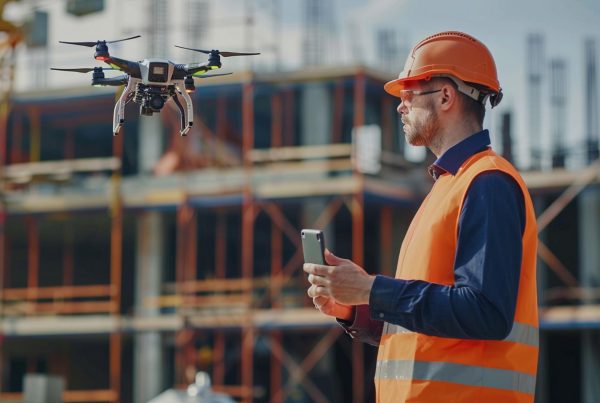
Adopting technology in construction, ranging from drones and wearable tech to smart machinery presents a transformative shift in how projects are executed. While these innovations promise substantial advantages, they also come with many challenges.
HSS is investing in developing drone solutions, software, and related business services. They envision drone utilisation for remote monitoring, site surveys, and regular project progress reporting.
Anticipated Advantages
- Increased Efficiency: Technology streamlines various construction processes, accelerating project timelines and reducing overall costs. For instance, drones facilitate aerial surveys and site inspections, providing real-time data that expedites decision-making and enhances project planning.
- Enhanced Safety: Wearable technologies, such as smart helmets and vests equipped with sensors, may play a pivotal role in mitigating risks on job sites. These devices monitor vital signs, detect hazardous conditions, and alert workers to potential dangers, significantly improving safety outcomes.
- Improved Productivity: Smart machinery and equipment, integrated with advanced automation and robotics, could optimise task performance and minimise manual labour. This boosts productivity and reduces errors and rework, leading to higher-quality outputs.
Real Challenges
- Training and Upskilling: One of the primary challenges is ensuring that site teams are proficient in utilising and deploying diverse technologies effectively. Providing comprehensive training programs and opportunities for upskilling is essential to maximise the benefits of these tools.
- Integration Complexity: Integrating multiple technologies into existing workflows can be complex and requires careful planning and coordination. Compatibility issues and interoperability constraints may arise, necessitating robust implementation strategies and ongoing support.
- Cost Considerations: Technology investments yield long-term benefits, but initial implementation costs can be significant. Balancing budgetary constraints with the need for innovation requires strategic decision-making and a clear understanding of the return on investment.
Improving Efficiency and Safety on Job Sites
Training, upskilling, and educating site teams are paramount to harnessing the full potential of technology and maximising its impact on productivity and safety. By empowering workers with the necessary skills and knowledge, organisations can:
- Facilitate Seamless Adoption: Comprehensive training programs ensure that workers are proficient in using technology tools, minimising resistance to change and promoting widespread adoption across all workforce levels.
- Promote Collaboration and Transparency: Technology fosters improved communication and collaboration among project stakeholders, facilitating real-time data sharing and collaboration. This transparency enhances decision-making and fosters a culture of accountability and teamwork.
- Enhance Safety Protocols: By integrating wearable technologies and IoT-enabled devices, workers can proactively identify and address safety hazards, reducing the likelihood of accidents and injuries on job sites.
While implementing technology in construction presents opportunities and challenges, its potential to enhance efficiency and safety is undeniable. By prioritising training and education initiatives and embracing a culture of innovation and collaboration, construction companies can realise the full benefits of technological advancements while mitigating associated risks.
The following article will focus on how HSS Engineers uses Building Information Modeling (BIM) to improve design coordination, identify issues early, and reduce risks, enhancing project efficiency and outcomes.
Article 1: HSS Engineers Berhad: Embracing Technological Advancements in Construction
Article 3: Transforming Project Planning with BIM
Article 4: The Role of AR and VR in Training and Visualisation
Article 5: Ensuring Design Quality in Construction














